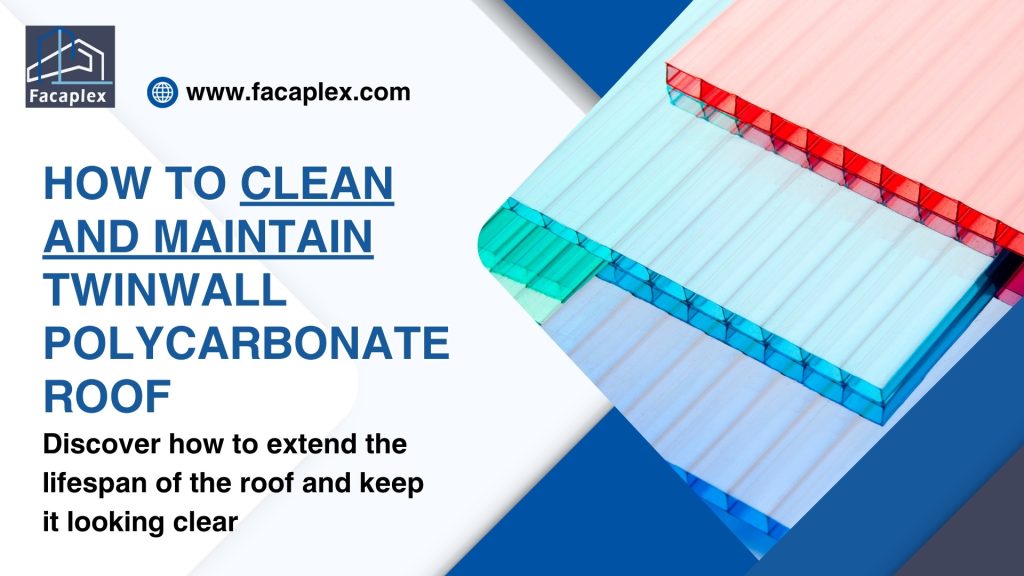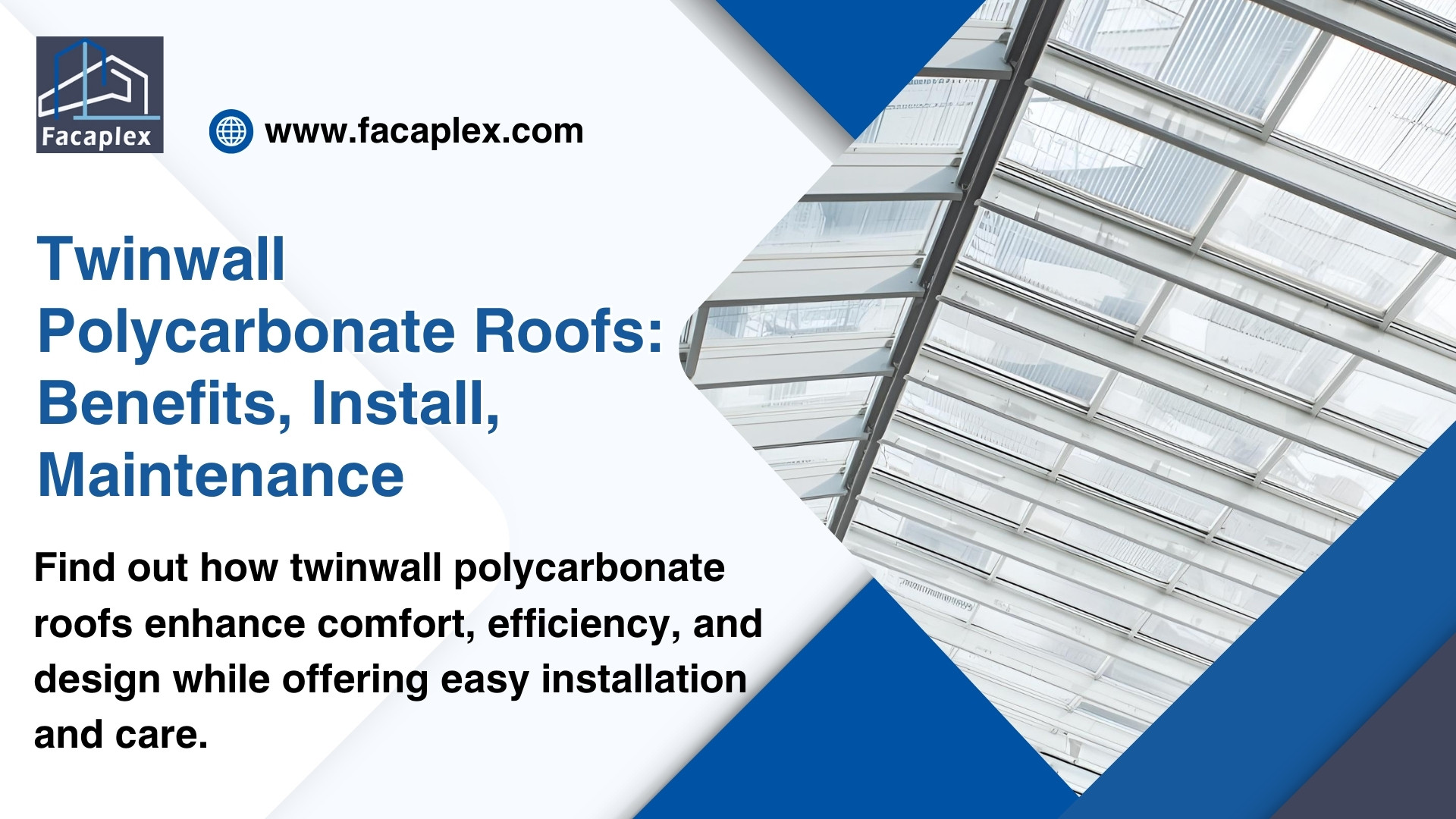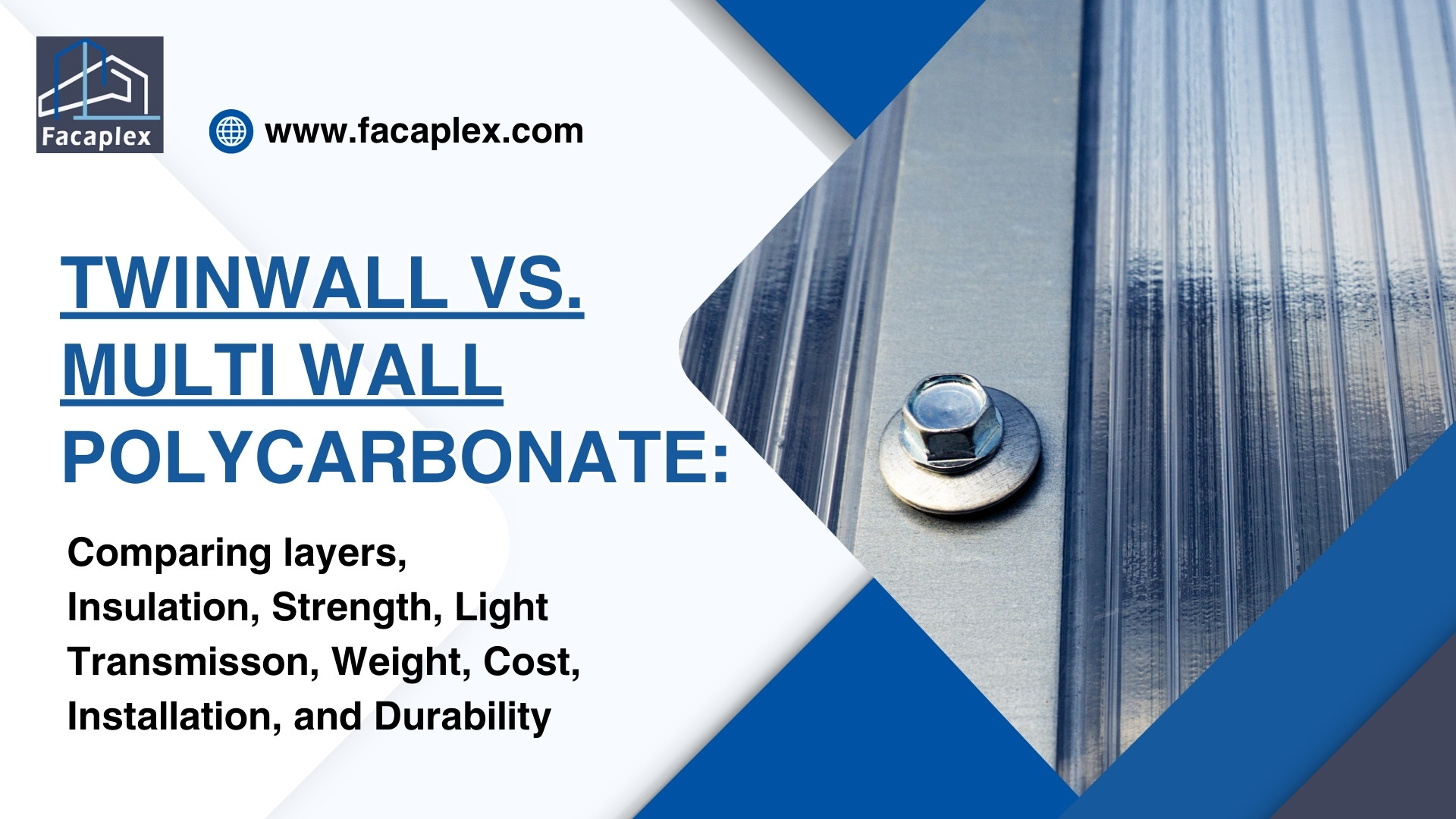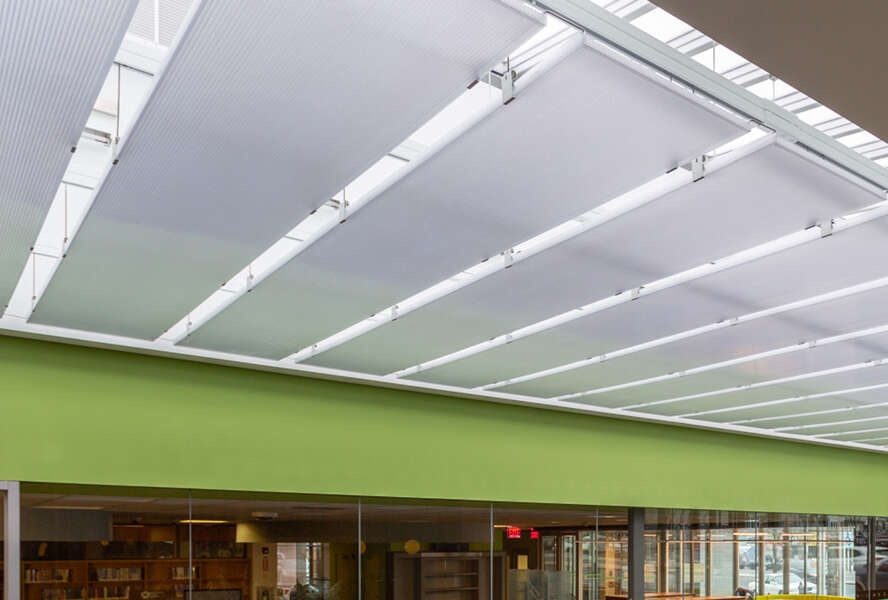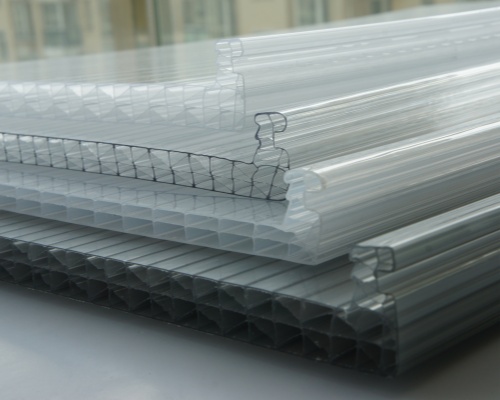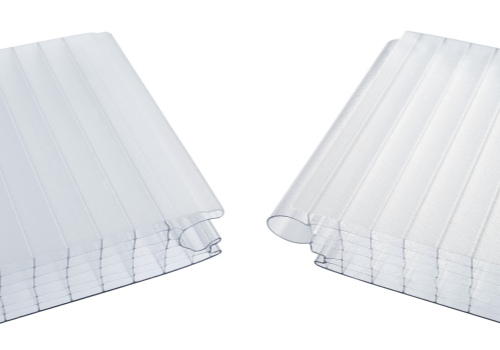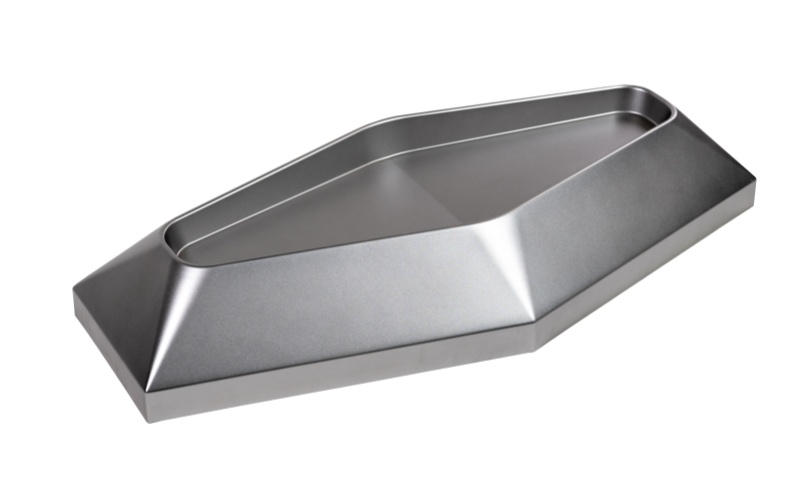
Understanding Twinwall Polycarbonate Roof
Features
Polycarbonate pergola roof stands out for its lightweight yet strong structure. This material resists impacts and harsh weather. Polycarbonate roof panels also block harmful UV rays, which helps protect outdoor spaces.
Polycarbonate pergola roof offers excellent light transmission. People can enjoy natural daylight while staying shielded from rain or snow. The double-wall design of polycarbonate pergola roof adds insulation, keeping spaces cooler in summer and warmer in winter.
Polycarbonate pergola roof does not rust or corrode. It remains clear and attractive for years. Many homeowners choose polycarbonate pergola roof because it requires less maintenance than glass or metal.
Common uses
Many people install polycarbonate pergola roof in gardens and patios. Homeowners often use polycarbonate pergola roof for carports, greenhouses, and walkways. Polycarbonate roof panels work well for covered outdoor seating areas.
Schools and businesses use polycarbonate pergola roof to create sheltered spaces. Polycarbonate pergola roof also appears in bus stops and bike shelters. The versatility of polycarbonate pergola roof makes it a popular choice for many projects.
Polycarbonate pergola roof adapts to both residential and commercial needs. People value the balance of strength, light, and weather protection. Polycarbonate pergola roof fits modern and traditional designs.
Care Importance
Proper care keeps polycarbonate pergola roof looking clear and strong. Regular cleaning prevents dirt and debris from scratching the surface. Polycarbonate pergola roof lasts longer when people remove leaves and check for damage.
Polycarbonate roof panels need gentle cleaning to avoid scratches. People should avoid harsh chemicals on polycarbonate pergola roof. A clean polycarbonate pergola roof improves the appearance and function of outdoor spaces.
Tools and Materials You’ll Need
Cleaning a polycarbonate roof requires the right tools. Using proper materials helps protect the panels and keeps them looking clear. The following items make the cleaning process safe and effective.
Soft sponge or microfiber cloth.
A soft sponge or microfiber cloth works best for polycarbonate surfaces. These materials gently lift dirt without scratching the panels. People should avoid rough pads because they can damage polycarbonate.
Mild soap or specialized polycarbonate cleaner.
Mild soap mixed with water cleans polycarbonate panels safely. Some cleaners are made specifically for polycarbonate and offer extra protection. Harsh chemicals can weaken polycarbonate and should never be used.
| Cleaner Type | Safe for Polycarbonate? | Notes |
|---|---|---|
| Mild dish soap | Yes | Mix with warm water |
| Specialized polycarbonate | Yes | Follow label instructions |
| Bleach or ammonia | No | Avoid at all times |
Hose with gentle spray.
A hose with a gentle spray rinses away dirt and soap from polycarbonate panels. High-pressure water can harm the surface. A gentle rinse also helps remove loose debris before washing.
Ladder and safety gear.
A sturdy ladder allows safe access to the polycarbonate roof. Safety gear, such as gloves and non-slip shoes, reduces the risk of accidents. People should always check that the ladder stands on a flat surface.
Optional: leaf blower for debris.
A leaf blower quickly removes dry debris from the polycarbonate roof. This tool works well before washing the panels. Removing debris first prevents scratches during cleaning.

Step-by-Step Guide to Cleaning a Twinwall Polycarbonate Roof
Safety First
Safety comes first when cleaning your polycarbonate panels. Always use a sturdy ladder and wear non-slip shoes. Gloves help protect hands from sharp edges or cleaning agents.
Check the weather before starting. Dry, calm days work best for cleaning. Avoid working on the roof during rain or strong winds.
Remove Loose Debris
Begin by clearing away any loose debris from the roof. Use a soft broom or a leaf blower to remove debris like leaves, twigs, or dust. This step prevents scratches during washing.
Never use metal tools or hard brushes. These can damage polycarbonate roof panels. Take care to remove debris gently and thoroughly.
Gentle Rinse
Next, rinse the polycarbonate roof panels with a hose set to a gentle spray. Start at the highest point and let water flow downward. This helps move dirt and dust off the surface.
Avoid using high-pressure washers. Strong water jets can harm the panels and force water into the twinwall structure. Rinsing before washing removes most loose dirt.
Wash with Mild Soap
Prepare a bucket of warm water mixed with mild soap. Use a soft sponge, microfiber cloth, or sponge mop for washing. Gently wipe the panels in straight lines, following the direction of the flutes.
Do not scrub in circles or use abrasive pads. This can scratch the polycarbonate. Wash with water and soap in small sections, rinsing each area as you go.
Rinse and Dry
After washing, rinse the roof again with clean water. Make sure to remove all soap residue from the polycarbonate panels. Leftover soap can leave streaks or attract dirt.
Dry the panels with a clean microfiber cloth or let them air dry. Avoid letting water pool on the roof. Proper drying keeps the roof clear and prevents water spots.
Maintenance Tips to Extend Roof Lifespan
Clean at least 2–3 times a year.
Regular cleaning helps keep polycarbonate roof panels clear and strong. Homeowners should schedule cleaning every four to six months. This routine maintenance prevents buildup of dirt and debris.
Check for algae or moss growth.
Algae and moss can damage polycarbonate roof surfaces. People should inspect the roof for green patches or slippery spots. Early removal with gentle cleaning methods keeps the roof safe and attractive.
Inspect for cracks, loose fasteners, or sealant damage.
Visual inspections help catch problems before they worsen. Look for cracks in polycarbonate panels or gaps in the roof structure. Tighten loose fasteners and repair damaged sealant to maintain roof integrity.
| Inspection Task | Frequency | Action Needed |
|---|---|---|
| Check for cracks | Every season | Repair or replace |
| Inspect fasteners | Twice a year | Tighten or replace |
| Examine sealant | Twice a year | Reseal if necessary |
Apply UV protective polish if recommended by manufacturer.
Some polycarbonate roof panels benefit from UV protective polish. This polish helps protect your polycarbonate roofing from sun damage. Always follow manufacturer instructions when applying any product.
Keep gutters and drainage clear.
Blocked gutters can cause water to pool on the polycarbonate roof. Clear leaves and debris from gutters during each cleaning session. Proper drainage supports roof maintenance and prevents leaks.
Common Mistakes to Avoid
Using abrasive brushes or pads.
Many people think scrubbing hard will clean better. Abrasive brushes or pads can scratch the surface of polycarbonate panels. Scratches make the roof look dull and can weaken the material over time.
Applying bleach, ammonia, or solvents.
Harsh chemicals like bleach, ammonia, or strong solvents can damage polycarbonate. These substances may cause the panels to become cloudy or brittle. Only use mild soap or cleaners made for polycarbonate surfaces.
| Unsafe Cleaners | Effect on Polycarbonate |
|---|---|
| Bleach | Causes discoloration |
| Ammonia | Weakens structure |
| Solvents | Makes panels brittle |
Walking directly on the panels without support.
Walking on polycarbonate panels without proper support can cause cracks or dents. The panels are strong but not designed to hold a person’s weight. Use a sturdy board or plank to spread your weight if you must step on the roof.
Using high-pressure washers.
High-pressure washers may seem like a quick solution. However, the strong water force can damage the polycarbonate surface and force water into the twinwall structure. This mistake can lead to leaks or mold growth inside the panels.
Additional Tips for Care
Regular inspections help spot problems early. Clean gutters and drainage systems to prevent water buildup. Schedule seasonal care to keep the polycarbonate roof in top condition year-round.

